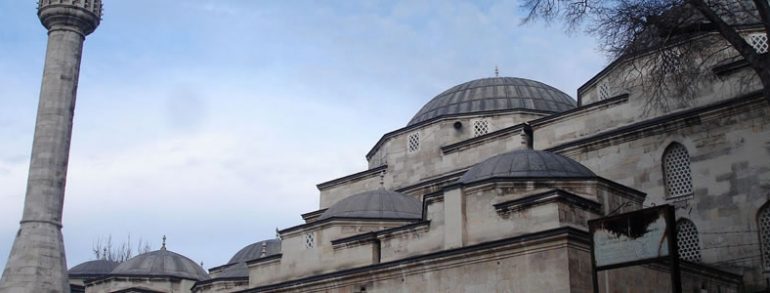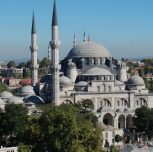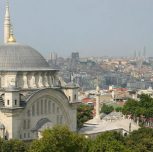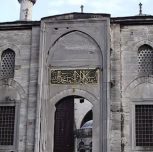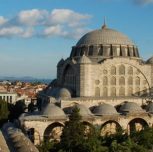The Mahmut Paşa Complex was built as the first vizier complex in Eminönü. In fact, it is this complex that gave the district its name since Eminönü means Mahmud Paşa, a grand vizier of Sultan Mehmet II, had it built by the architect Atik Sinan after the conquest of Istanbul in 1453. The construction of the complex began in 1463 and ended in 1477. It is composed of a mosque, a bath, a madrasa (religious school), an imaret (soup kitchen), a sıbyan mektebi (Ottoman elementary-primary school), a han (caravanserai), and a tomb. In 1753, when a fire took place in the Bazaar, great damage was caused to a large portion of the madrasa, and a sıbyan mektebi and an imaret were destroyed. The mosque, bath, tomb, and Kürkçüler Hani are the only parts of the original complex which still exist today.
The mosque, which is considered to be the primary structure of the complex, was built to a great extent according to the first Ottoman Architectural style. The main area of the mosque, which is covered by two domes one of a diameter of 10.45m and the other of 11m, extends over an area of approximately 26m by 12m. There are 18 domes, including the two domes covering the main space of the mosque. The decorations in the mosque belong predominantly to the post-18th century period, and the Hünkar Mahfili (royal residence) is from the year 1828. There is an inscription on the qibla gate (to the shrine) of the mosque which reveals the year when it was built.
The area is covered with three domes each, and both the left and right sides of the mosque’s harim are covered with two domes. It is thought to have been designed as a Tabhane (hostel). The marble niche with muqarnas at the entrance door is one of the first examples of its kind in Istanbul. During restoration works, the minaret of the mosque was renewed in a classical style, during which it lost its original lines.
Mahmud Pasa, the tomb’s builder, is burried in the domed tomb composed of limestone (küfeki taşı) blocks on an octagonal plan. In addition, a bath, one of the oldest of Istanbul (1466), a water fountain or sabil (sebil), built by Mustafa Ağa (the chief officer of the Ottoman Palace), are the other structures which have made their way to the present day. Finally, there is only one classroom remaining from the madrasah of the complex.


